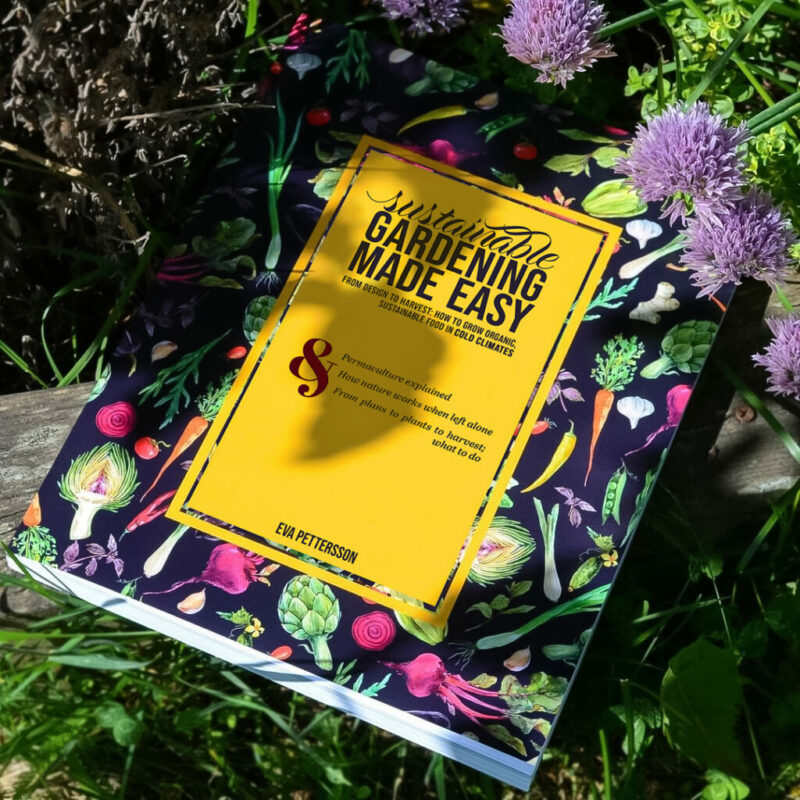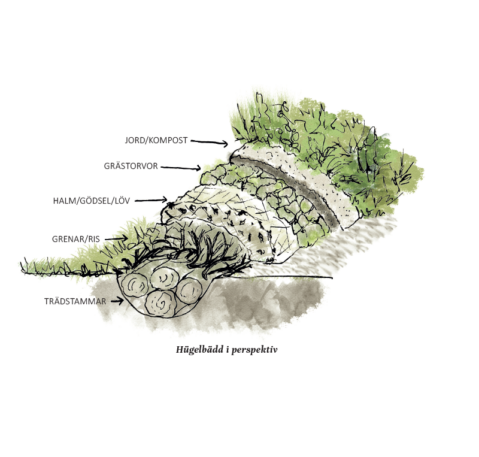
How to grow organic, sustainable food in colder climates
WELCOME TO A WORLD WHERE EVERYTHING GROWS AND THRIVES
Here no one needs to do the weeding or watering, and neither chemicals nor human-made fertilizers are needed. Because when nature itself gets to decide, everything is perfect. We need to return to the basics: How nature’s ecosystems work and how we can use them to start growing more locally, on a small scale, and without toxins.
In SUSTAINABLE GARDENING MADE EASY, you’ll get insight into how everything works and how you imitate nature’s methods to succeed with your organic gardening endeavors. The book mixes permaculture and common sense in a way that makes it both easy and fun to garden – you’ll also get plenty of tools to figure out what the best solution is for your particular needs. The book delivers holistic thinking – it doesn’t only cover gardening, but also chapters on how to best make use of resources like water, sun, and heat, how to combine animals with gardening for happy animals and better growth, and so much more!

Ease of access is the Alpha & Omega
To make information easier to access there are a whooping 138 descriptive illustrations in the book. There is also a 30-page appendix at the end of the book with fact tables covering:
●
Plants that indicate soil types
●
Green manure plants
●
Plants for companion planting schemes
●
Plants that thrive in shade
●
Plants for natural wind protection
Reviews
From – to +
The negative reasons behind the book, to the positive!
– The food production of today
With fewer and fewer farms with ever-increasing monocultures, today’s industrial farming causes enormous problems – such as deforestation, soil erosion, and pollution. Just because a farm has gone organic does not always mean that it is better or more sustainable than the conventional farm was, especially if it’s made up of large monocultures. The only good thing about these large-scale organic crops is that the toxic chemicals are gone.
– Genetic modification & synthetic biology
– Today’s food supply
Everything we feel we need has to be produced far away from our reality and transported into the cities; at just the right moment when store shelves needs replenishing. This means that many have lost understanding of how things are produced and what they contain. Many foods are diluted with everything from water to various chemical additives. Domestic food supply in Sweden is said to be just under 50%. We are also dependent on the import of goods needed to get those crops – such as fuel and artificial fertilizer. In the event of a crisis, inventory won’t last for many days. This is an unsustainable system that risks crashing at the slightest disturbance in the various transport routes.
